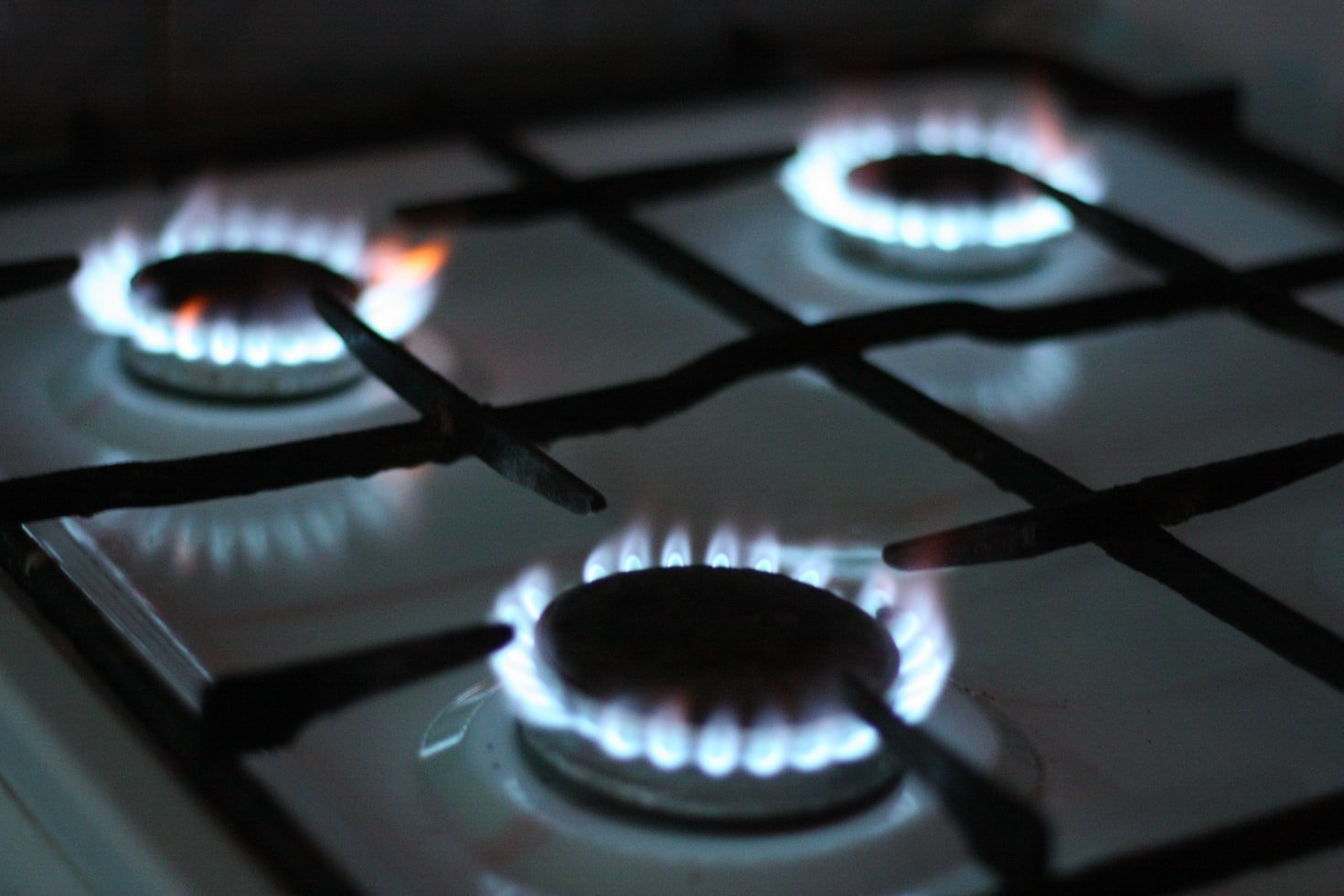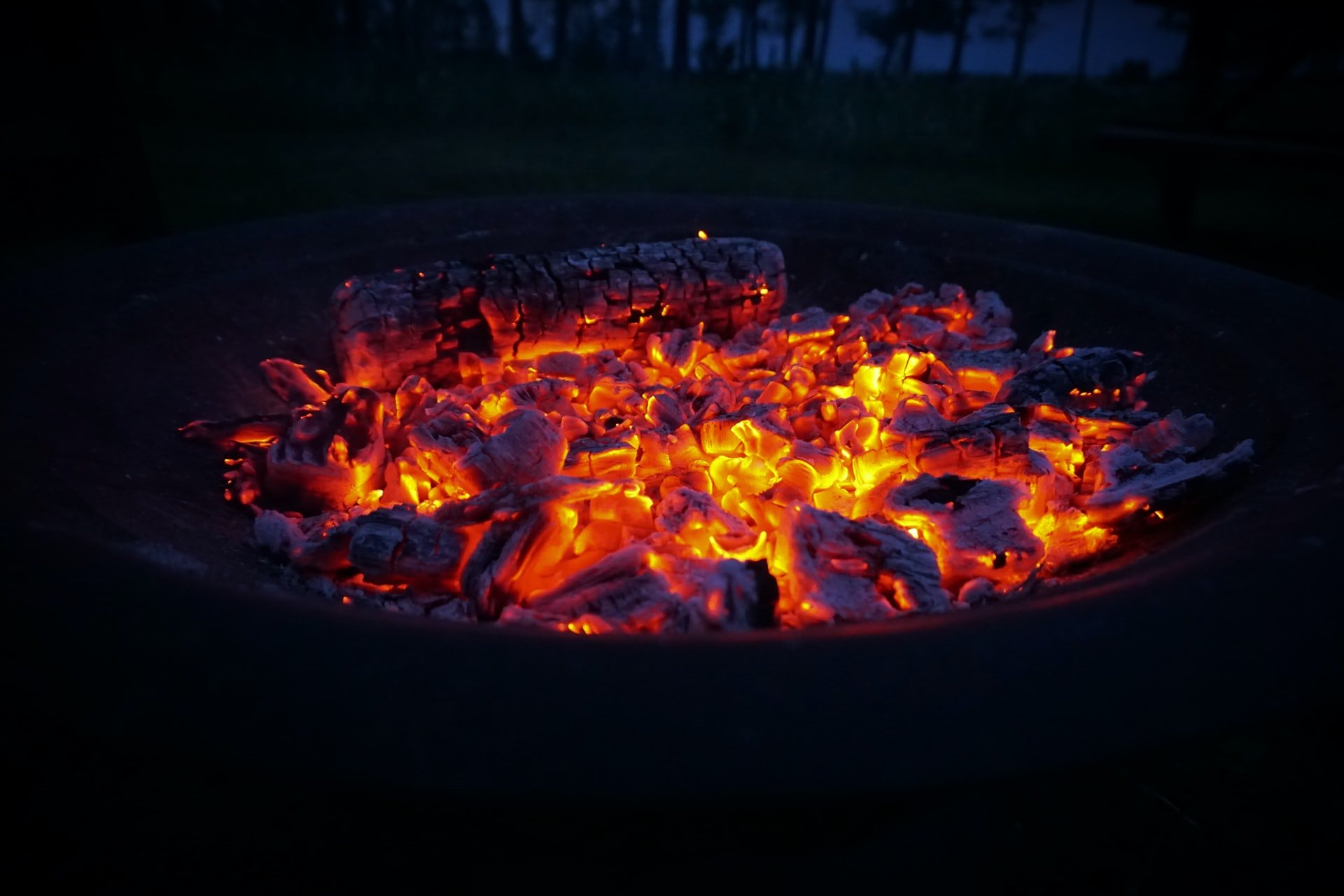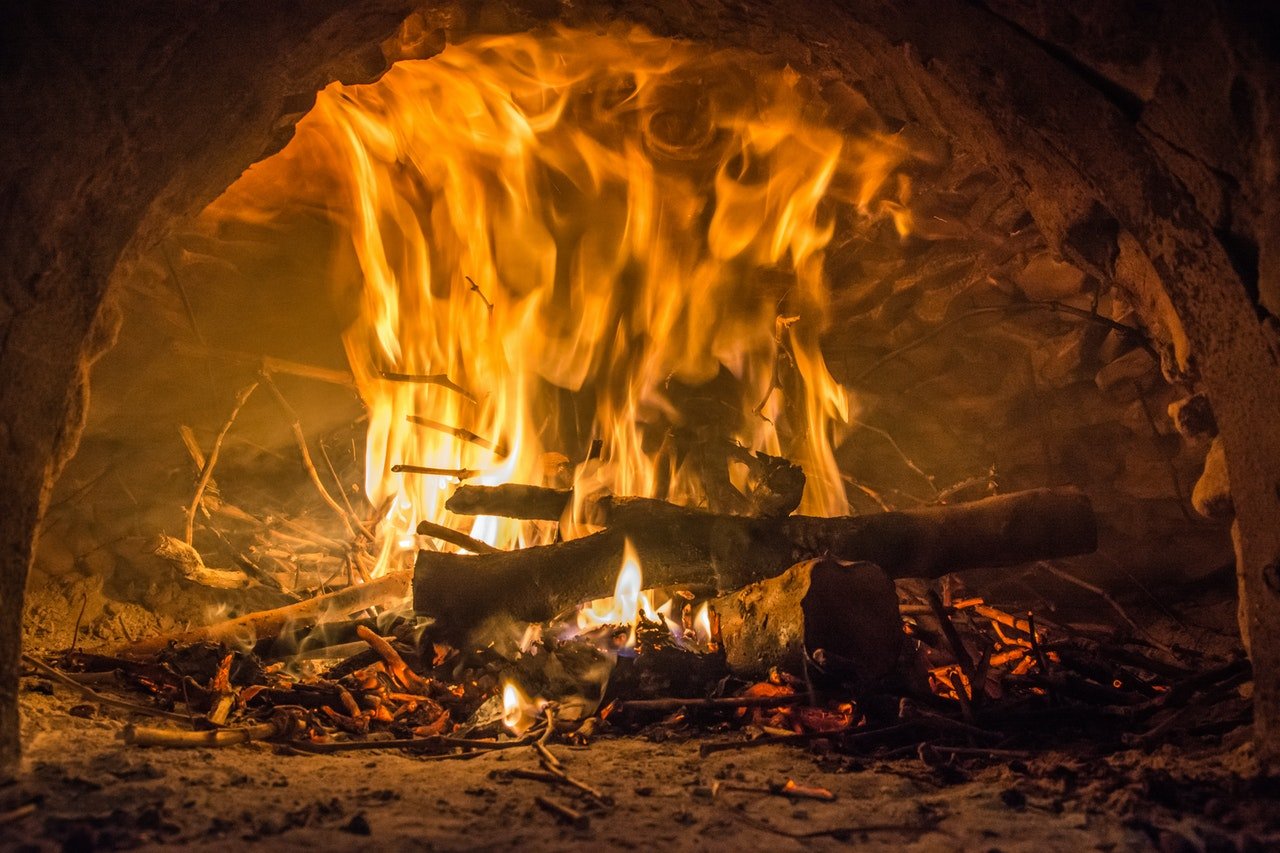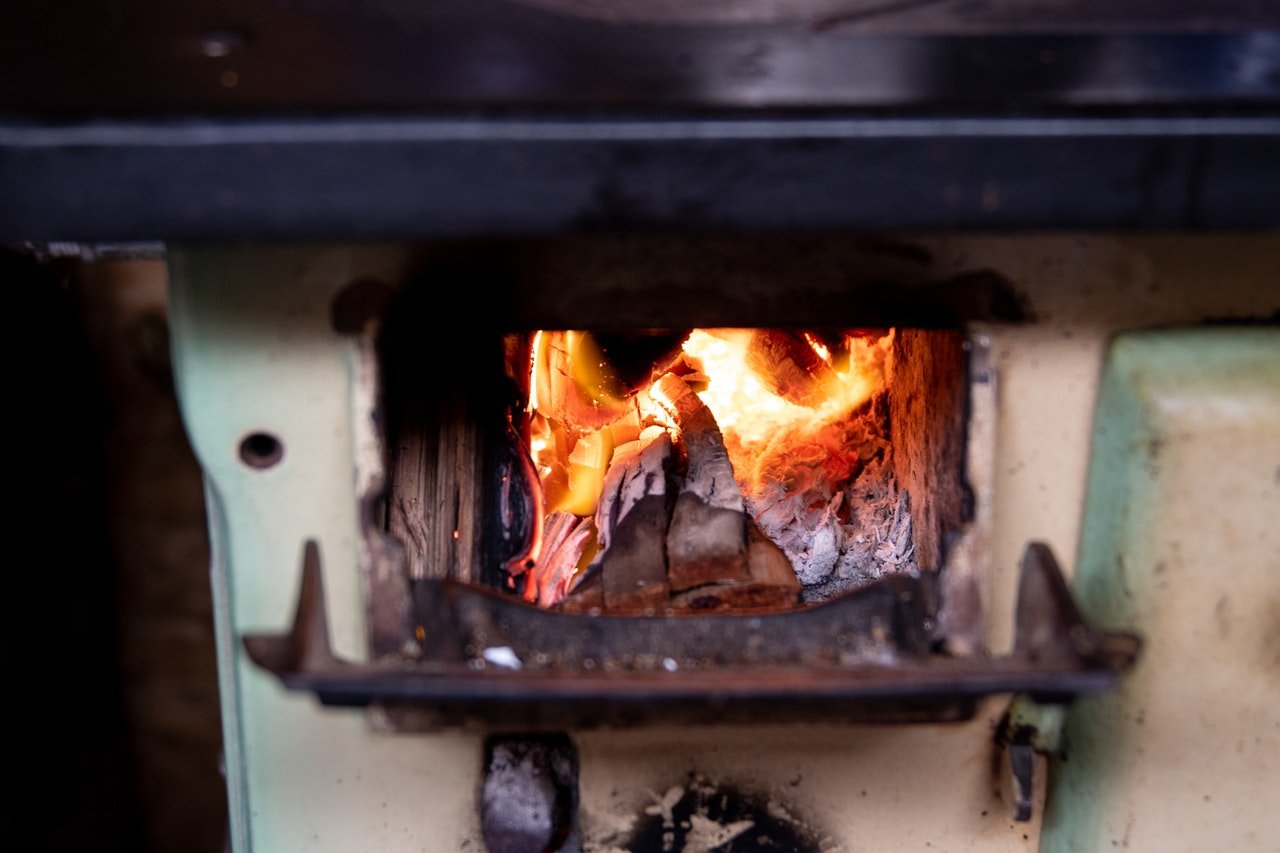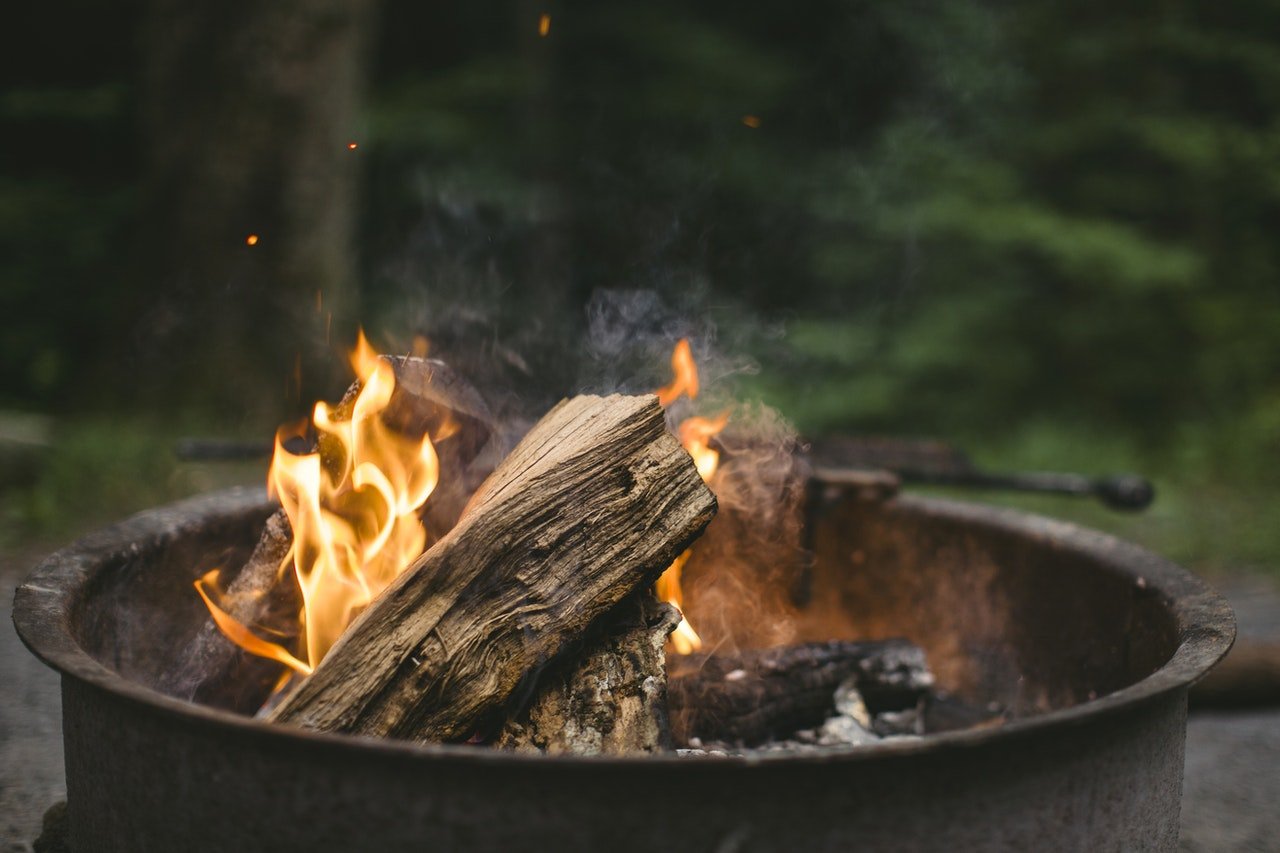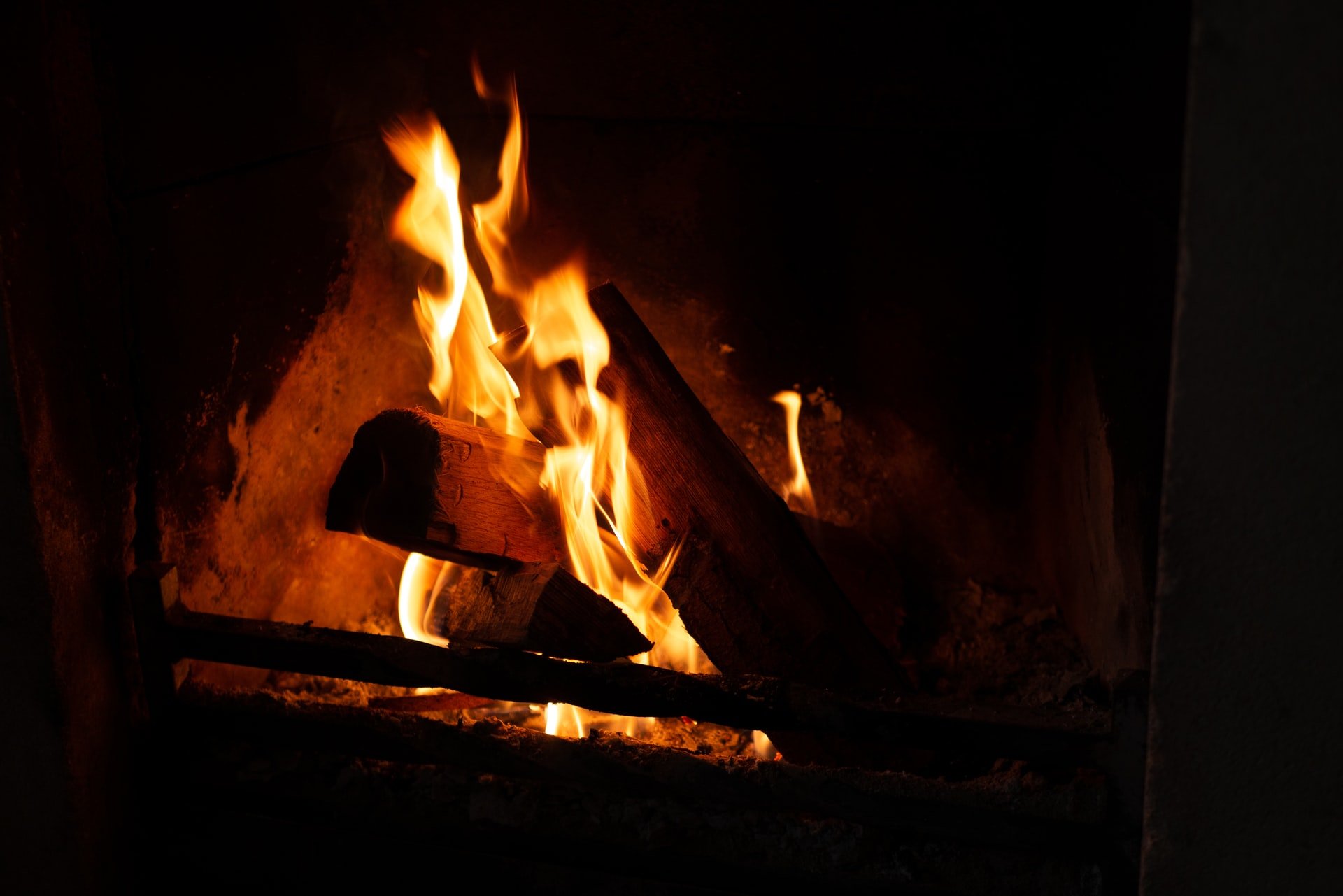Your Wood Stove Burning? Here’re Why and How to Put It Out
The main goal of a wood-burning stove is to burn wood more efficiently to produce more heat. But despite its intensity controls, it can become too hot and lead to an accidental fire. Some reasons why that happens to a wood stove and tips on preventing them include the following:

Problem #1: Too Much Wood
Although a large wood stove can hold more than a smaller one, you should only put in the amount of wood your particular model and size can hold.
Adding more wood to a big wood stove could cause the furnace to burn too hot. To avoid this, we like to burn small, medium-sized logs in our wood stove at one time and make sure not to put too much wood into the furnace.
Solutions:
- Ensure that the logs we burn do not exceed the height of the air vents at the back of our stove. These vents provide extra fresh air needed for secondary combustion, which helps us burn our fires more efficiently. If you keep too much wood on the fire, it could lead to overfiring, which happens when temperature levels inside the wood stove are higher than what it is designed for.
- Overfiring could cause damage to the components, particularly to the metal plate located near the top of the firebox. If you notice that your stove is burning too hot, ensure that there isn't too much wood inside your stove or take out around two to three logs.
Problem #2: Wide-Open Air Vents
Wood stoves burn more efficiently if the air vents are closed down in stages as the fire progresses. When the fire is intense and lively, most of the air vents should remain open so that plenty of air can flow through.
However, when the fire burns low and smoulders, it needs to be fed with just enough oxygen to get it going again. In these instances, most air vents should be closed entirely so that the flames gently and steadily burn the wood.
This allows for an even more efficient burn because it prevents heated air from leaving the stove too quickly and keeps a low-temperature fire going. Prevent this from happening with the following solutions:
- If wood stove vents are left open by too much during a fire, your stove can be burning too much. With the vents fully open on a furnace, oxygen is being fed to the fire more abundantly, and the resulting flame will burn the wood faster. A speedier burning fire is a hotter burning stove.
- If the fire is too large, slide the air vents to half-open or even a quarter open to maintain proper fire levels.
Problem #3: Wood Stove Is Too Big
A wood stove’s biomass output depends on the heat needed to maintain a comfortable living environment. When a wood stove is too large, it can overheat a room.
If you find that your stove is overheating, you should:
- Open up whatever doors to the space or open any windows for better airflow.
- If a wood stove is too small, it may not be able to burn enough wood (biomass) to produce adequate heat. A fire that burns too slowly can be inefficient and produce more smoke.
- Increased smoke accumulation inside the flue due to inefficient burning can increase creosote buildup. Clean the flue more frequently or replace it when needed.
Conclusion
Wood stoves from Scotland require the same careful use as any home device. Purchase one with ample size to warm your house, place only enough wood to power the machine, and maintain proper air vent positions, so the wood stove remains efficient and safe for everyone to use.
Purchase a quality wood stove from Scotland at Stove Scotland! We carry top brands such as Merlin, Aduro, Pod, Askgard, TermaTech, and Burley throughout Scotland and the UK. No chimney? No problem! We’ll install your furnace anywhere! Get a free quote from us now!
How to Make Your Wood Burning Stove More Efficient: 5 Tips
Wood-burning stoves are under fire, with new statistics identifying them as a "significant contributor" to tiny particle pollution. But it's not all bad news: the same study reduced the projected share of particle pollution caused by wood stoves from 38 per cent to 17 per cent.
These tips will help maintain your wood burning stove as energy-efficient as possible. Read on!
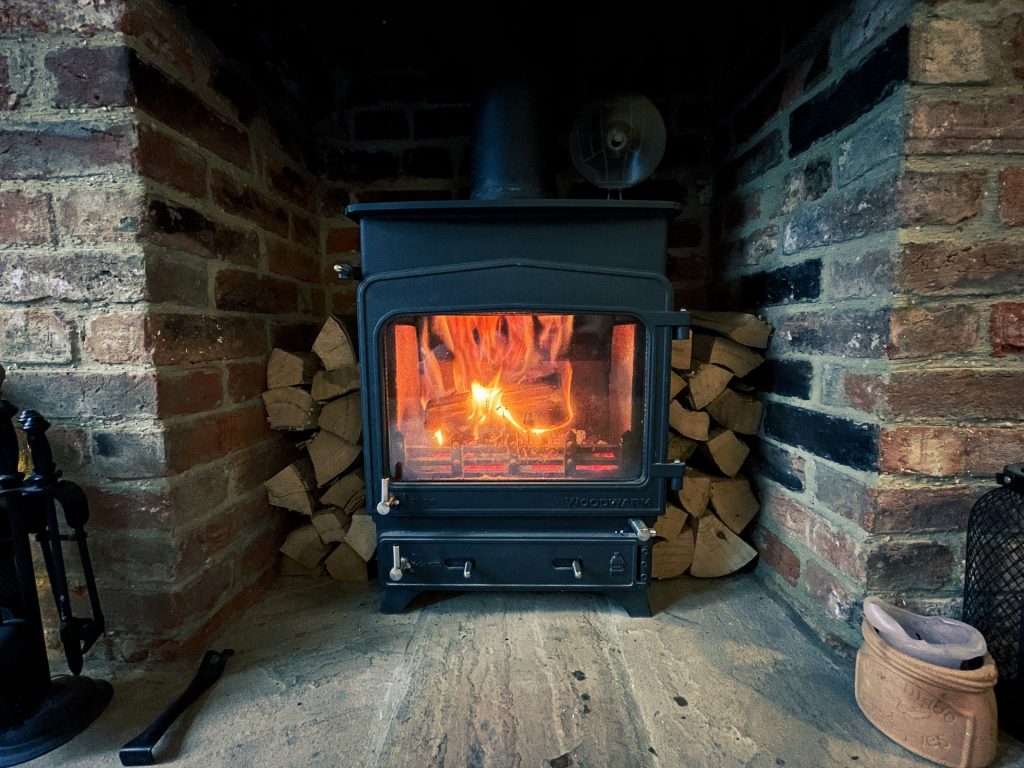
1. Upgrade to an Eco Model
Wood-burning stoves must comply with clean air legislation as well as construction codes. The new EcoDesign guidelines, which took effect in January 2022, require all newly built appliances to be cleaner and more efficient. Look for stoves that are at least 75% efficient (meaning that 75% of the heat goes directly into heating a room); however, the most recent versions are up to 90% efficient. It should be noted that open flames only provide 15-20% efficiency.
2. Choose the Right Equipment for Your Space
The size of the appliance you need depends on the size of your room and how often you use your stove. Remember that a stove should be only one part of a total heating system. To ensure you're getting the heat you need, consider the BTU output, which is the amount of heat it puts out per hour.
3. Use the Right Kind of Fuel
The most critical factor in ensuring optimal wood-burning is selecting the correct fuel for your wood-burning stove.
Kiln-dried firewood logs are placed beneath a bench, with boxes of Lekto Wood Fuel on top.
The best wood for the job will be extra-dry, seasoned firewood with a moisture percentage of less than 20%, which is the perfect moisture level for burning wood effectively while also lowering emissions and soot formation.
Aside from burning more effectively, using seasoned and extra-dry firewood ensures minimum smoke and ash for a healthier wood-burning stove, making maintenance easier and keeping the device running at its peak during every burn!
4. Maintain Regular Stove Maintenance
A wood-burning stove requires a lot of regular care, from clearing away extra ash to repainting your appliance, to keep burning your wood as effectively as it should.
Whether you need to repair problematic components, remove harmful corrosion, or just clean the interior of your stove, you should always keep your wood-burning appliances in good working order before beginning to use them more regularly. Proper maintenance and repairs will not only help you burn your firewood more effectively and conserve precious energy, but they will also save you a lot of money in future repairs!
5. Learn When to Use Your Burner
A wood burner isn't the most effective way to heat your home, and it should only be used to supplement a renewable heating system.
For example, in a home with a ground source heat pump or an air source heat pump, you may need to utilise a wood burner on occasion during freezing weather.
Conclusion
If you use the proper wood-burning techniques and make sure you have the right wood-burning appliance for your home, you should be able to create a safe, efficient, and comfortable environment for you and your family.
The perfect combination of contemporary technology with age-old philosophy, wood-burning stoves offer you the means to keep warm and comfortable throughout the chilly winter months.
Are you looking for stove fitters in Scotland? Stove Scotland can help! Our team is composed of professional tradesmen who are all experts in installing stoves. We take a custom approach to each space, even if you don't have a chimney, so that you can achieve the wood burner stove of your dreams. Don't hesitate to contact our team today for a free quote!
4 Reasons to Hire Professionals to Install Your Stove
So, you want to invest in a stove for your home. That's a great thing, as you finally get access to a source of warmth to make your home cosier! However, there's one problem: who should be installing your stove? Whether it be gas or wood-burning, understand that there are a lot of considerations to make when installing a stove.

With that in mind, should you be the one installing a gas or wood-burning stove? We always recommend hiring a professional to help you out! Here's why:
4 Reasons to Hire Professionals to Install Your Stove
1. Maintains Safety
Perhaps the most obvious reason for hiring a professional is for safety. Taking on a project like this doesn't just involve the installation of a new stove, but there are also several other things that will need to be done. That includes removing an old stove and installing a new one, making certain adjustments to the stove's area, and more. In all, it can be a fairly complicated process and one that is much easier to tackle with the help of a professional.
2. Saves You Time
One way that installing a stove can be a challenge is the amount of time it can take. With this in mind, hiring a professional who is experienced in this field can save you a lot of time. Not only will they be able to move through the process much faster, but they will save you the time it takes to figure out how to install a stove, how to properly connect the stove to the ductwork, and more.
3. Makes It Look Great
Let's be honest. No one wants to be stuck inside their home due to the cold, but looking at an ugly old stove isn't exactly a great way to combat that. By hiring a professional to install your stove, you can be sure that it will be installed in a way that will look great. They will make sure the installation is done properly and that the look of the stove blends in with the rest of your home.
4. Saves You Money
One of the main reasons that people decide to install stoves on their own is to save money. After all, if you're able to do it on your own, you will be able to save money on installation. This can be a great way to save money, but not if it comes at a high cost. If you are installing a new stove, you will also have to buy a new stove as well. On top of that, you will have to pay for any materials needed for installation, and you will have to pay for your time and effort. In the end, hiring a professional to do the job can mean a lot of money saved.
Conclusion
Overall, if you want to be sure that the installation process goes smoothly, you need to hire a professional to do it for you. Whether you are installing a gas or wood-burning stove, you need to be sure that the installation is done properly. Even if you love a DIY project and you're great with a tool, it's best to hire a professional to handle this one. They can ensure many things, such as the safe operation of the stove down to meeting the regulations and law revolving stove installations!
Stove Scotland offers their expertise to help install various types of stoves to meet any needs. If you are looking for stove installers in Scotland, work with us today!
Top 5 Maintenance Tips for Your Wood-Burning Stove At Home
Top 5 Maintenance Tips for Your Wood-Burning Stove At Home - If you've recently had a wood stove installation, the first thing you'll need to know is how to care for it. Given that the stove is simply a giant lump of metal, it may sound unusual, but there are a few things to note that will help your wood-burning stove last longer. So, get started with some useful wood stove care advice.
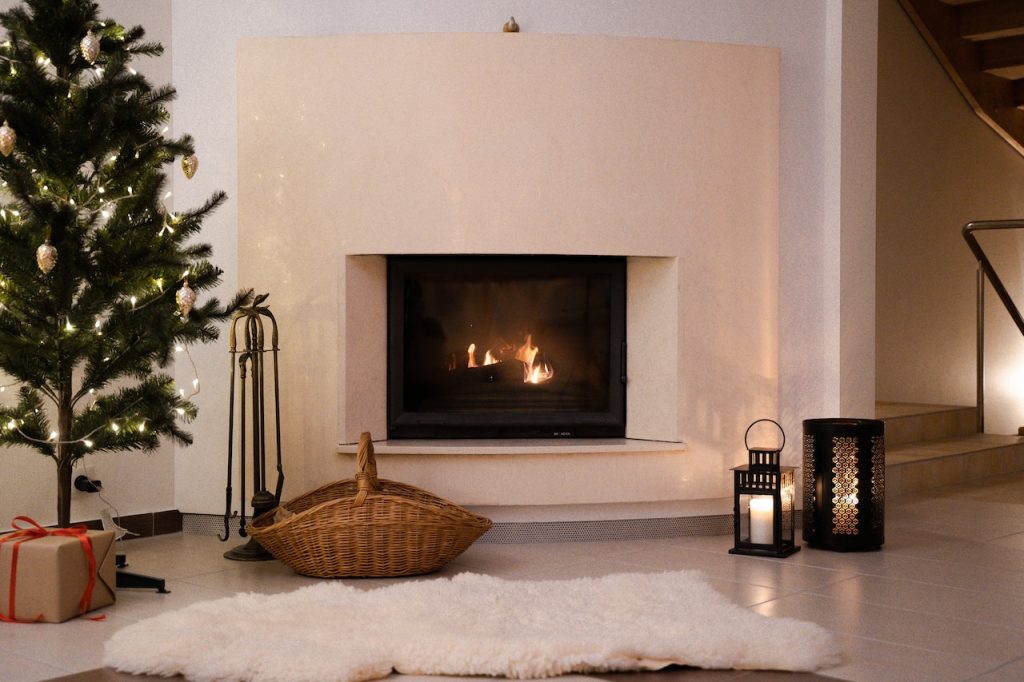
Make Sure You're Burning the Proper Kind of Wood
If you burn the incorrect type of wood for an extended time, your wood-burning stove can develop various issues.
Wrong wood is defined as any wood having a moisture level of more than 20%. When there's too much moisture in the wood, it doesn't burn. It produces more smoke and can cause creosote to build up in your chimney.
Any composite-type wood, such as MDF, plywood, or OSB, is also considered the wrong wood. These wood types are bound with compounds that are particularly harmful to human health when burned in a wood stove.
Start and Finish on A High Note
The first half of this notion is straightforward: try to get it up to temperature as quickly as possible when you start your fire.
As the fire grows, this helps prevent an initial buildup of smoke. Smoke is created by incomplete combustion (i.e., wood that does not burn hot enough); therefore, a roaring start to your fire will result in less smoke. As a result, the soot in your chimney is reduced, and your stove glass is kept clean.
Learn how to ignite a top-down fire or use an S-tonne of firelighters to get your fire started. The top-down approach is unquestionably superior!
To help the fire get started faster, make sure you leave the correct quantity of ash in your wood-burning stove.
The second half of this advice is to put out a fire. You should conclude it on a high note, just as you started it. So, when you're ready to add the last log, make sure you reopen your air vents and start the fire again.
If you've allowed the fire to die down too much, you may need to add a few more pieces of kindling to get it going again.
Again, the advantages of finishing on a high note are obvious. You keep the fire from smoldering out, which prevents soot accumulation.
Increase The Lifespan of Your Rope Seals
Rope seals on wood-burning stove doors, in general, disintegrate with time. This implies that they'll begin to leak air (or smoke out) unless they're replaced every few years. In any case, you'll wind up with a stove that isn't up to par.
There isn't a way that permits you never to have to replace your rope seals, but you can certainly extend their life!
Use A Thermometer in Checking the Stovepipe
Stovepipe thermometers are a must-have for everyone who owns a wood-burning stove. They're affordable, and if you acquire a good one, they'll provide you with a fantastic method to "read your fire."
Stovepipe thermometers, in essence, offer you a general idea of when your fire is too cold, too hot, or just perfect. Moreover, you can achieve it with just a glance—no laser thermometers are required.
Using a stovepipe thermometer instills in you the habit of feeding your fire at precisely the appropriate time to maintain a consistent and ideal temperature.
Remove Ash Using A Vacuum
Wood burns better on an ash bed, but there comes the point where an ash bed becomes a mountain of ash.
You can sweep the ash away with a dustpan, but it won't eliminate all the small particles of ash and charcoal accumulated around the door seals, grates, and other nooks and crannies of your wood stove in Scotland.
If you don't get rid of these "bits," you risk abrasion damage to your rope seals and a less effective fire due to impeded air movement.
Conclusion
When purchasing wood-burning stoves, one of the most important factors is how much time it will take to clean, maintain, and operate them efficiently. Although wood is an excellent fuel for effectively creating heat, it does need some additional care.
Stove Scotland will work with you to guarantee that your stove will precisely match the design and proportions of your space. If you're looking for a wood stove in Scotland, contact us for more information!
6 Mistakes You Should Avoid When Using a Wood Stove
Wood stoves are an excellent method to minimize your heating expense while adding aesthetic value to your property. Like any appliance, there’s a proper and improper way of utilizing stoves. Unfortunately, owners often commit mistakes that easily cause their stoves to break down.
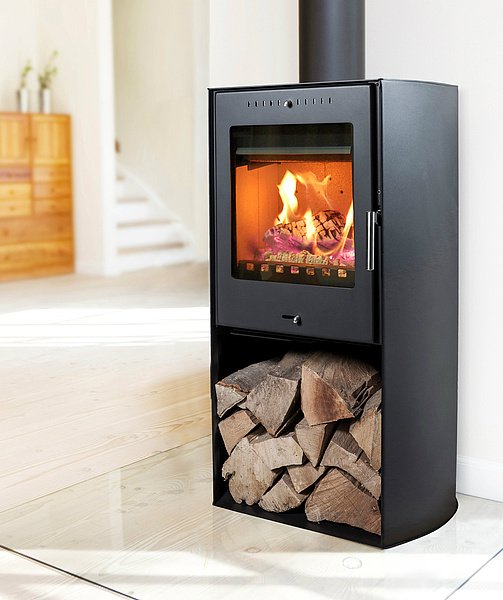
Here are six mistakes you need to avoid when using a wood stove:
1. Not Cleaning the Wood Stove
One of the most crucial wood stove maintenance recommendations is to clean the interior and outside at least yearly. This should be done to remove any debris that may have built up in the wood stove chimney.
Most debris in a wood stove comes from burnt wood. Hot air collects wood ash within the stove which may turn into soot.
The flue vent can also develop a layer of soot around it, causing hot air to leak out the chimney needlessly. The vent blockages can prevent the woodstove from operating at its maximum efficiency, making it waste time and money.
2. Burning the Wrong Wood
Different kinds of wood have different heating values. For example, hardwoods, such as oak and ash, produce more heat per unit of weight than softwoods, like pine.
You can burn nearly all types of wood, but you should use the kinds of wood that are best suited for the stove. Examples include wood chips, wood pellets, cordwood, and fire logs. Each of these fuels has its own advantages and disadvantages.
For instance, wood pellets have been treated to lower moisture content, making them ideal for burning in wood stoves. However, wood pellets are processed with chemicals to extend their shelf life. This causes harmful gases to form when the wood pellets burn.
It's best to buy wood or fuel dried naturally without additives or artificial substances.
3. Ignoring the Firewood Supply
The rule of thumb for burning wood is plenty of dry firewood on hand. The wood's moisture content should be 20 percent or less. Wood should also be free of nails, screws, and other metals.
It's always a good idea to keep a wood-burning stove stocked with wood just in case unexpected weather moves in. This is a matter of safety, especially if you live in a remote area. It will help you avoid paying for expensive firewood delivery.
4. Not Using Wood Stove Accessories
Some wood-burning stoves come with accessories, such as fan and blower systems, enabling the owners to control the heat output.
However, many wood stoves are not equipped with these accessories. This means that the owners must be attentive when burning and maintaining their stoves.
Properly installed chimney and damper controls will help owners increase or decrease the amount of heat produced by the fire.
5. Ignoring the Chimney
The chimney is a vital component of the stove. It must be designed and built to safely carry the fumes and smoke up and out of the house.
A well-constructed chimney will also give you a better draft. This translates into a faster, more efficient fire and more heat and prevents fire accidents with poorly-constructed chimneys.
6. Ignoring the Maintenance Schedule
Experts suggest that you inspect the stove, chimney, and damper (if there is one) at least once a year or as needed.
First, examine your chimney closely every time you use the stove. Make sure it's not clogged with creosote. If it is, you'll need to clean it.
If you have a "forced air" system (most do), make sure the air vent is clean to avoid gases not mixing properly. This will cause turbulence in the fire, which wastes energy and cause the chimney to creosote. To avoid this, try to keep the air vent clean by using a pipe cleaner every time you use the stove.
Conclusion
When used correctly and maintained regularly, Wood stoves provide the heat necessary to warm your home or business. Keeping your wood stove in good working order is a small investment that will pay you handsomely in time.
Stove Scotland is an excellent choice if you want a high-quality wood stove in Scotland. Our top objective is to give you a competent, honest, and dependable service at a reasonable cost. Contact us, and we’ll help you find the best fit for your space with our in-depth knowledge of stoves and fires!
Why Are Wood-Burning Stove Heat Shields Essential?
If you plan on installing a wood-burning stove in your home, you might have heard others encouraging you to install a heat shield as well. Is that a mandatory move? Why is it necessary? Let this article tell you more about the role of heat shields on wood-burning stoves.

What Is a Wood Burning Stove Heat Shield?
A wood-burning stove heat shield is a barrier that covers the wood-burning stove. It is installed in front of the appliance to protect a room's wall, floor, and nearby furniture from the stove's heat. As a rule, heat shields are made of metal or concrete and are covered with protective paint.
Purpose of a Wood Burning Stove Heat Shield
The main two functions of a wood-burning stove heat shield are:
1. Protect Your Home's Surrounding
A heat shield is designed to stop the heat from the stove from damaging the home's surroundings. The appliance's heat can be intense, primarily when the furnace is used for mass heating.
Instead of spreading it outwards, heat shields are designed to reflect the stove's heat towards the room. Such design helps keep the room warm and safe. It also reduces the risk of your home's surroundings being affected by the heat.
2. Enhance the Stove's Performance
A heat shield enhances the stove's performance by reflecting more heat into the room. The stove becomes more efficient if it has a heat shield installed. Your new wood-burning stove will be able to heat the space more effectively, so your wood fuel supply will last longer.
What Will Happen If You Do Not Use Heat Shields?
1. Damage to the Wall
The wood-burning stove's heat is intense. For example, a wood-burning stove with a 3.1 kW heating capacity can burn up to 3,295 BTU/h during operation. This intensity can quickly damage a room's wall, floor, and furniture.
If you have a wood-burning stove without a heat shield, you will end up with a property damaged by heat. These include cracks, ink stains, and loose boards on the home features mentioned.
2. Increased Energy Consumption
Replacing damaged walls, floors, and furniture takes time and money. The longer the damage stays, the more money you will spend replacing them. For example, you will have to pay for extra materials and labour to repair the damaged walls and floors.
Since wood-burning stoves are used for heating, you will likely use them for mass heating. If so, you will find yourself spending more money on wood fuel to keep the house warm.
3. Reduced Efficiency
If you do not use a heat shield, the stove's performance will be reduced. Using a stove with a damaged wall, floor, and furniture will increase the chances of the stove malfunctioning. The stove will get damaged faster, thus reducing its heating capacity.
What Is the Ideal Height for a Heat Shield?
The ideal height for a heat shield is two inches above the top of the stove. If the heat shield is not mounted correctly, it will affect the stove's performance. The heat shield will reflect less heat to the room, thus reducing its efficiency.
When installing a heat shield, make sure that it is mounted in a proper location. Otherwise, it will not be able to do its job. You will also risk your home's surroundings being damaged.
Conclusion
Using a heat shield is recommended for all types of wood-burning stoves. It prevents the stove from damaging the home's surroundings. It also enhances the stove's performance by reflecting its heat to the room. If you have a wood-burning stove without a heat shield, it is recommended that you install one right away. Otherwise, you will risk damaging parts of your home and wasting your money.
Should you need a wood stove in Scotland, you can get one from us. Stove Scotland aims to provide our clients with professional, honest and reliable service at affordable prices. We supply, install, and maintain wood-burning stoves. Don't hesitate to get in touch with us for a free no-obligation quote.
5 Misconceptions About Wood Burning Stoves, Debunked!
One of the most helpful heating devices today is a wood-burning stove. Unfortunately, there are still a lot of myths and uncertainties surrounding wood-burning stoves. From installation to safety, it seems that everyone has something to say about them. We will debunk some of these myths to help you make a more informed decision when buying a wood-burning stove:

1. It Harms the Environment
This is one of the most common myths surrounding wood heat. Some people believe burning wood for heat is bad for the environment since it produces carbon dioxide. However, wood burning actually has a much smaller carbon footprint than other heating sources.
Depending on the type of wood you burn, you could get 2 to 3 times the heat out of it than what it produces. Plus, wood-burning stoves are more efficient than most other heating systems, so they use less fuel.
2. It's Less Efficient Than an Open Fireplace
Another common myth is that a wood-burning stove is less efficient than an open fire. While it is true that you have to burn more wood in a furnace, it's actually the opposite when it comes to efficiency.
Wood burning stoves are much more efficient than open fireplaces. In fact, some can reach up to 80% efficiency in converting wood into heat, compared to 40% for an open fireplace.
3. It's Only Useful When There's No Power
A wood-burning stove is useful and can still be used when there is power. In fact, it's even more useful when you have power. Think of it as a way of both keeping your living room warm and lowering your electricity bill.
4. It's Hard Work
While there is a learning curve when you first start burning wood, it's still not that time-consuming. You don't have to chop a whole tree down to get a good amount of wood. Some people even prefer burning wood to chopping it down since it's much safer, which can be a lot of fun for the whole family.
5. You Can Use Any Types of Wood
Not all types of wood are good for burning. It is important to use the right types of wood for burning when it comes to efficiency and for the overall health of your wood-burning stove.
As a general rule of thumb, use hardwoods that are dense and burn hotter such as knotty pine and oak varieties. Because of their density, you can get the most heat out of the wood without having to add too much. The harder the wood is, the more carbon dioxide it can produce. This is why hardwood is more expensive than softwood, which burns less.
Get Your Wood Burning Stove
Wood stoves are a great alternative to other methods of heat, especially during the colder months. With the increased efficiency of newer models and the decrease in installation cost, there really is no reason not to have a wood-burning stove. A stove can be a wonderful addition to your home, especially if you have a family to keep warm. So no more worries about harmful emissions, and no more concerns about heating costs. With a wood-burning stove, you can feel the heat of a crackling fire for a fraction of the price you would pay for an electric heater.
Do you need a wood stove in Scotland? Stove Scotland has multi-fuel and wood-burning stoves. We will work with you to ensure your stove fits the style and dimensions of your home perfectly. Contact us!
The Beginner's Guide to Lighting a Wood Burning Stove
The Beginner's Guide to Lighting a Wood Burning Stove: If you're interested in wood-burning stoves, you may be wondering how you can light that perfect fire. If you do some research, you'll find that these types of stoves need to burn in and should not produce too much smoke.

These stoves do look great and can add value to your home, so it's worth it if you learn how to get that fire going properly.
Materials You Will Need
1. For starters, you will need to collect some newspapers. You will need a few sheets to get a good fire started. If not, you can try other fire starters. You can buy this in a store or make your own. Some good materials for this include sawdust, oil-soaked paper, and more.
2. You will need some kindling wood. This is wood that is typically larger, but it also needs to be dry to make it burn more efficiently. You can buy bagged kindling wood or seasoned logs. Seasoned logs are darker-coloured and drier.
3. You can also use a lighter or matches to start the flame.
4. You may choose between fuel and coal, though the former is a more common choice for contemporary homes. It works well with firewood that has very little moisture.
5. Of course, you shouldn't be handling this process bare-handed. Make sure you have tongs to handle firewood. You can also use protective gloves as an extra measure, especially if you're concerned about bigger flames.
6. Finally, a poker or fire iron should help you stoke the flames. You can use it to stir the fire and make it bigger, and you can adjust your burning materials while the fire is already going.
How to Light Your Stove
When you have all your necessary tools, you can start your flame at last. With some easy steps, you should get your stove up and running in no time. This, of course, assumes that your stove installation is already done.
1. Get your stove ready for ignition by cleaning it up and getting rid of any flammable objects around it. Make sure the grates are properly placed as well.
2. Open up all your vents. This will allow your stove to have more air supply. This helps you create more heat and allows your firewood to catch on fire quickly. It's great for the beginning stage of lighting your fire.
3. If you have a chimney damper, you should make sure it is open. This will ensure that the smoke produced by your fire won't go into your home. This should be left open before you even start placing logs and the like.
4. Now, arrange your kindling and get it into the stove. The wood should have a good amount of space between the pieces, not being too clumped or far apart. You'll want to put paper on the bottom and wood on top. If your fuel is too cold, you can warm it up a bit before continuing.
Then, you will let it burn a little and arrange the kindling with your poker and tongs to make sure that it burns evenly. Leave your stove slightly open to let it catch fire.
5. Now, you can close the stove and let the fire expand. If needed (like if the fire dies out), you may add more logs and newspapers to make it burn more. From here, you should start adjusting your vents to control the fire. Your bottom vent can be slowly closed once you reach the flame level you need. Then, the top vent can be adjusted to increase or decrease the flame.
Conclusion
Now, you've got your wood stove burning beautifully! If you need to keep up the flame, you can add a little fuel over time. Just make sure you don't go overboard. Finally, always remember to clean up after using your oven.
Stove Scotland is the best place to get a reliable wood stove in Scotland. We carry top brands perfect for any home, so give us a call, and we can fit your stove anywhere—even without a chimney!
A Short Guide on How to Clean a Wood Burning Stove
Maintaining a wood-burning stove is essential. It ensures the wood-burning stove runs with maximum efficiency and ensures that it stays looking good too. Like most things, you probably think that's easier than done.
If it's your first time cleaning the stove, you might be a little intimidated. Well, don't worry, it's a lot more approachable than it seems. You just need to make sure you remember to be thorough throughout the whole process.
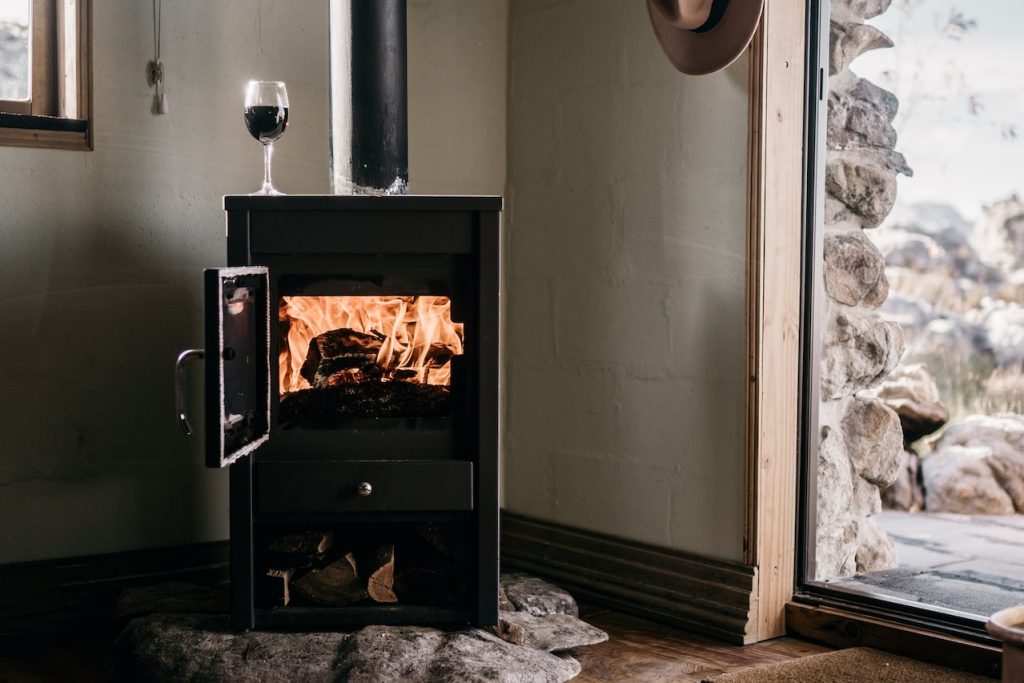
This article will share the simple steps to clean your wood-burning stove.
Here's what you need to know:
Start with the Inside
The most important part of cleaning a wood-burning stove is to start from the inside. You don't want to find yourself having to do all that work again just because you missed a spot or forgot a part of the stove.
Once you open the door, you'll see a small metal box burnt the wood. This is what we call the firebox. It's essential to watch out for ash, embers, and leftover wood. Vacuum them up to get a nice clean and tidy look.
Next, you'll need to clear the ashes. Add water and let the ashes melt. Now, you can transfer them to a metal container to be taken away in your car. After that, wipe down the walls and other parts of the inside of the stove. Use a cotton cloth to wipe the walls, and make sure to pay attention to all the nooks and crannies.
Wipe the Glass
You don't have to do this step every time you do your cleaning. Just do it when the dirt starts to build up. Take a sponge and wipe down the glass in the wood burning stove. If there is lots of dirt, you can use a plastic scraper to remove the old grime. After that, wipe it down with a cotton cloth to remove the remaining dust.
If you have a hard to remove dirt, use a wet rag to wipe it off. Don't use a paper towel because it will leave tiny paper pieces stuck in the glass. Paper towels are also not very absorbent, so they might not get the grime off that well.
Clean the Exterior
The outside of the wood-burning stove is also quite important to clean. You don't want the stove to look dirty and unkempt. It's a part of the visual appeal of the stove. Wipe the outside with a damp cloth or wet rag. If some areas are hard to reach, use a small brush or a scraper to clean them up.
Use a scraper to remove any dirt that accumulates around the door. If you have time, you can also use a wire brush to get rid of the dirt and rust. After that, wipe the surface with a damp cloth or a damp paper towel.
Cleaning a wood-burning stove is not hard. It just takes a little bit of time and effort. But in the end, you'll get to enjoy a nice, clean stove that looks beautiful.
The Bottom Line
Cleaning a wood-burning stove is one of the easiest ways to keep your stove working well for many years to come. By following the simple steps above, you'll be able to clean it up in no time. Plus, you won't need to hire a professional to do the job for you.
If you need help with stove installation, we’re the right people to help you. Here at Stove Scotland, we will work with you to ensure that your stove will perfectly fit the style and dimensions of your room. You can count on us to get your stove right. Contact us today and let us know how we can help you!
How to Maintain a Wood or Multi-Fuel Stove
To ensure your wood or multi-fuel stove runs safely and efficiently, you should have the stove serviced yearly. Without maintenance, essential moving parts can seize, which can make the oven’s functions fail, or the stovepipe can become corroded, which can cause leaks and smoke damage to your home.
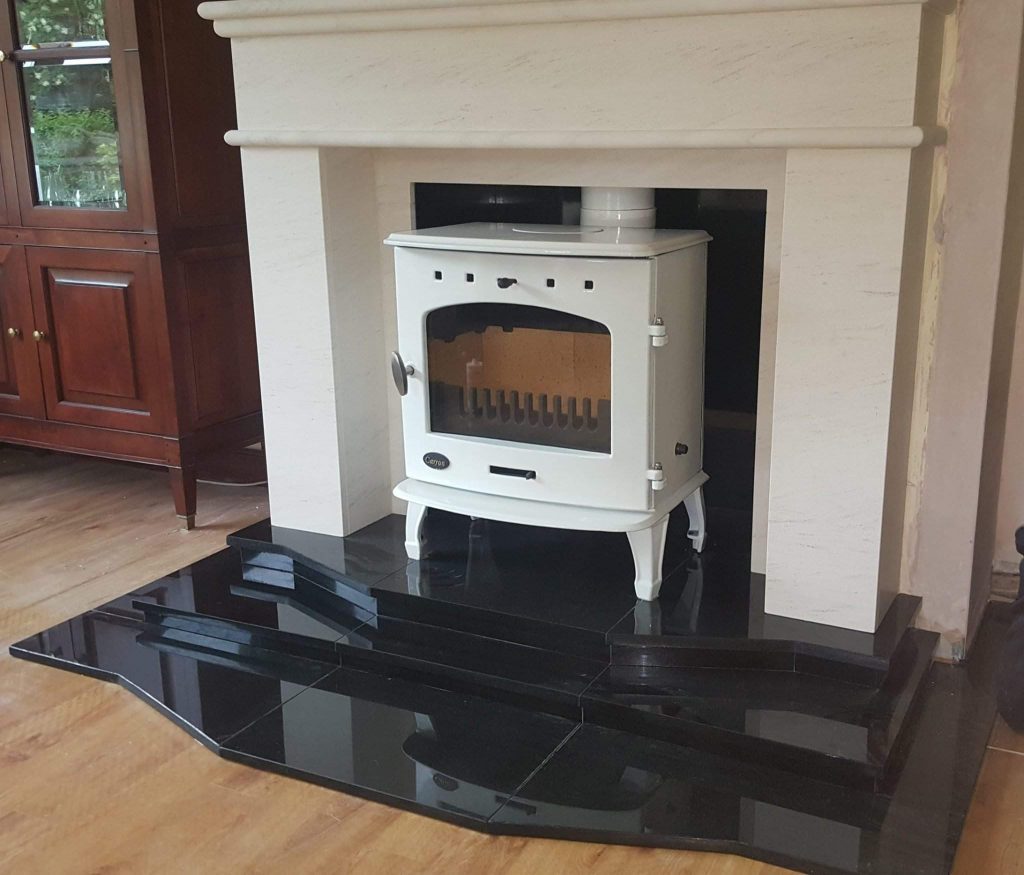
Using a HETAS registered engineer such as The Stove Doctor for all your servicing needs is recommended.
Routine Safety Checks for Stove Maintenance
- You can do a few routine checks to ensure your wood or multi-fuel stove runs efficiently and safely.
- Do not use a stove if it isn’t in total working order. It is hazardous to use a stove that is leaking.
- Perform a thorough inspection of your stove and its components. Look for signs of wear, including warped door panels, cracks in the casing and rust on the metal parts.
- Check to see if the door is secure. If it’s loose, there may be damage that could lead to a fire.
How to Maintain a Wood Stove
- Clean the stove’s burn pot, door and ash pans. Remove the oven door and remove ash from the firepot, the oven and the ash pans. Wipe down the inside to prevent a build-up of dust.
- Check outside the stove. Inspect the bolts holding the stove into the wall, ensuring they are not loose. Inspect the stove pipe for holes and cracks. If wood ash comes out of the pipe, it will not burn correctly.
- Clean the burn pot, oven and grate. Fill the burn pot with a solution of 50 per cent water and 50 per cent white vinegar. Let the pool soak for several hours or overnight.
- Ensure the fire bricks are unbroken and the outer casing is clean.
- Check the heat exchanger. The heat exchanger is the metal pipe that transfers heat from the firebox to the oven. If it is full of soot, it will make the stove less efficient.
- Check for cracks and blisters on the cast iron casing. These can indicate a weak point, so you should report any damages for repair as soon as possible.
How to Maintain a Multi-Fuel Stove
- Clean the glass panels on the door. Dirt and dust can reduce the efficiency of your stove, so you should clean the glass daily.
- Check the oven door seal. If the seal is torn or damaged, you’re likely to leak. This will have a detrimental effect on the efficiency of the stove and your home.
- Look at the dampers and check that they are working correctly. If the damper will not open, move or close fully, it could mean a problem.
- Make sure the heat exchanger is unbroken and clean.
- Look at the dampers and check that they are working correctly. If the damper will not open, move or close fully, it could mean a problem.
- Check the flow of the heat exchanger. It should be clean and free of obstructions.
Conclusion
Keeping your wood or multi-fuel stove running at peak efficiency is vital to make sure you get the best heat output possible. Following the above tips and performing regular checks on your stove will help you keep your stove in excellent condition.
Stove Scotland supplies, installs and maintains multi-fuel and wood-burning stoves in West Lothian. We are market experts with a comprehensive knowledge of stoves and fires, working with you to ensure that your stove will perfectly fit the style and dimensions of your room. If you need wood or multi-fuel stoves in Scotland, call us at 01501 760051 now! Let us know how we can be of service to you.





